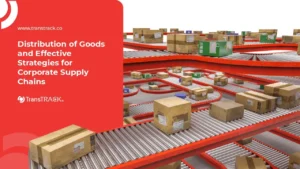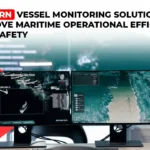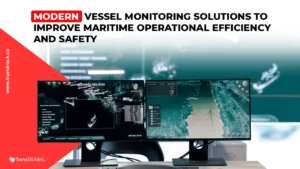Here’s The Difference between Expedition and Logistics!
Posted on March 6, 2024 by Nur Wachda Mihmidati

Difference between expedition and logistics can be easily distinguished by several things. In the ever-evolving business world, supply chain management is one of the key factors that determine the success of a company. In this context, it is common to hear the terms “expedition” and “logistics” used interchangeably, but they have very important differences in terms of concept, scope, and implementation.
Difference expedition and logistics are two interrelated concepts that have different focus and scope. Understanding the difference between the two is an important first step in designing an efficient and effective delivery strategy.
In this article TransTRACK, we will explain in detail the differences between expediting and logistics, as well as how the proper use of each can affect the overall supply chain of a company. By doing so, you will have a deeper understanding of how these two concepts can be optimally applied in your business context.
Definition of Expedition
Expedition is the activity of sending goods or people from one place to another using various types of transportation such as land, sea, air, or a combination of both. The main objective of expediting is to deliver goods or people in a timely, safe, and efficient manner. In a business context, expediting is often done by shipping companies or agents who are responsible for the process of packaging, shipping and delivering goods or people from the sender (usually the seller) to the receiver (usually the buyer) for a fee. Expedition can also refer to the company or agent that provides the service.
Definition of Logistics
Logistics is a system that organizes and coordinates the flow of goods, information, and other resources from the point of origin to the point of destination with the aim of meeting consumer needs efficiently and effectively. In more detail, logistics involves planning, executing, and controlling all activities related to the procurement, storage, transportation, inventory management, and distribution of goods or services. The main objective of logistics is to ensure that products or services are available in the right quantity, at the right place, at the right time, and at an optimal cost. In a business context, logistics is often a key factor in determining the operational and competitive success of a company.
The Difference Between Expedition and Logistics
While the two terms are often used interchangeably or in related contexts, there are important differences between expedition and logistics:
Definition
- Expedition: Refers to the process of delivering goods or people from one place to another using various types of transportation, with a focus on the physical delivery of goods or people.
- Logistics: Refers to the organization and coordination of the overall flow of goods, information, and other resources from the point of origin to the point of destination, including the planning, execution, and control of related activities to meet consumer needs efficiently and effectively.
Scope
- Expedition: Focuses more on the physical aspects of delivering goods or people, including packaging, shipping, and delivering goods or people from one location to another.
- Logistics: Involves managing the entire supply chain, including planning, procurement, storage, transportation, inventory management, and distribution of goods or services.
Main Focus
- Expedition: More oriented towards the operational aspects and physical delivery of goods or people, with a focus on speed, safety, and efficiency of delivery.
- Logistics: More oriented towards strategic planning and management of the overall flow of goods and information in the supply chain, with a focus on efficiency, improved service quality, and cost reduction.
Party Involvement
- Expedition: Usually carried out by shipping companies or shipping agents who are responsible for the physical delivery of goods or people from one point to another.
- Logistics: Involves various parties, including manufacturers, suppliers, logistics service providers, transportation operators, warehousing, and others, in an effort to efficiently manage the flow of goods and information.
While there are differences between expediting and logistics, they are interrelated and essential in ensuring efficiency and effectiveness in the supply chain of goods and services.
Types of Expedition and Logistics Shipments
Here are some types of shipping in the context of expedition and logistics:
Types of Shipping in Expeditions
Ground Shipping
The use of trucks or other vehicles to deliver goods from one location to another on land. This can be a fast and efficient option for shipping goods within the country.
Ocean Shipping
Using a ship to send goods across the sea. This is a commonly used option for shipping goods internationally, especially for large and heavy cargo.
Air Shipping
Using an airplane to send goods from one location to another quickly. This is an option that is usually used for shipping items that require very fast delivery or that have a long distance to travel.
Combination Shipping
Combining multiple types of shipping, such as ground shipping followed by ocean shipping or air shipping, to utilize the advantages of each shipping method.
Types of Shipping in Logistics
Just-in-Time (JIT) Shipping
Delivery of goods only when they are needed, with the aim of reducing storage costs and improving supply chain efficiency.
Cross-Docking Delivery
The process of transferring goods from one truck or vehicle to another without the need to store them in a warehouse first. The aim is to speed up the flow of goods in the supply chain.
Dropshipping
A business model where the seller does not store the goods being sold, but ships the order directly to the buyer’s side from the supplier or distributor. This reduces storage costs and increases efficiency.
Full Container Load (FCL) and Less than Container Load (LCL) Shipments
In the context of ocean shipping, FCL refers to shipments that fill the entire container, while LCL refers to shipments that only partially fill the container. This affects the cost and speed of delivery.
Shipping by Category
Grouping goods by type or category to optimize the shipping and storage process.
Each type of shipment in forwarding and logistics has advantages and disadvantages that need to be considered according to the specific needs and particular conditions of the shipment.
By understanding the differences between freight forwarding and logistics, we can optimize our shipping strategies and supply chain management more effectively. However, to achieve an optimal level of integration in logistics services, companies need sophisticated and reliable solutions.
This is where the role of Logistic Service Integrator from TransTRACK becomes important. As a company that prioritizes efficiency, reliability, and visibility in logistics management, TransTRACK is here to provide a unified solution that integrates all aspects of the supply chain. Using the TransTRACK platform, companies can access a comprehensive range of logistics services, from inventory management and shipping to data tracking and analysis.
Through the integrative approach provided by TransTRACK’s Logistic Service Integrator, companies can increase operational efficiency, reduce costs, and improve customer satisfaction. As such, TransTRACK’s innovations in logistics services are key for companies to gain a competitive advantage in an increasingly complex and changing market.
If you want to optimize your supply chain and improve your company’s operational efficiency, don’t hesitate to take advantage of TransTRACK’s Logistic Service Integrator benefits. Get the best logistics solutions to support your business growth, and be at the forefront of your industry.
Recent Post
Topic :
Recommended Articles

 Bahasa Indonesia
Bahasa Indonesia








